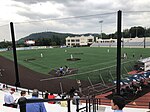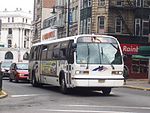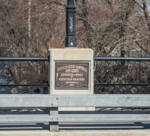Old Gun Mill
Buildings and structures in Paterson, New JerseyColt's Manufacturing CompanyIndustrial buildings and structures in New JerseyNew Jersey building and structure stubsSilk mills in the United States
Old Gun Mill, also referred to as "Colt Gun Mill", is a notable historic mill in Paterson, New Jersey where the Colt revolver was first produced in the 1830s, and where John Ryle produced and manufactured silk for the first time in the United States. As of 2008, the mill is in ruins near the banks of the Passaic Falls in Paterson but efforts to save this historic structure are still being attempted.
Excerpt from the Wikipedia article Old Gun Mill (License: CC BY-SA 3.0, Authors).Old Gun Mill
Ryle Road, Paterson
Geographical coordinates (GPS) Address Nearby Places Show on map
Geographical coordinates (GPS)
| Latitude | Longitude |
|---|---|
| N 40.917898 ° | E -74.178821 ° |
Address
Ryle Road
Ryle Road
07522 Paterson
New Jersey, United States
Open on Google Maps








